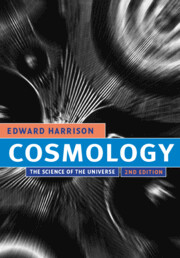Book contents
- Frontmatter
- Contents
- Preface
- Introduction
- PART I
- 1 What is cosmology?
- 2 Early scientific cosmology
- 3 Cartesian and Newtonian world systems
- 4 Cosmology after Newton and before Einstein
- 5 Stars
- 6 Galaxies
- 7 Location and the cosmic center
- 8 Containment and the cosmic edge
- 9 Space and time
- PART II
- PART III
- Appendix – Fundamental quantities
- Index
7 - Location and the cosmic center
from PART I
Published online by Cambridge University Press: 05 June 2012
- Frontmatter
- Contents
- Preface
- Introduction
- PART I
- 1 What is cosmology?
- 2 Early scientific cosmology
- 3 Cartesian and Newtonian world systems
- 4 Cosmology after Newton and before Einstein
- 5 Stars
- 6 Galaxies
- 7 Location and the cosmic center
- 8 Containment and the cosmic edge
- 9 Space and time
- PART II
- PART III
- Appendix – Fundamental quantities
- Index
Summary
The Sun is lost, and the earth, and no man's wit
Can well direct him where to look for it.
And freely men confess that this world's spent,
When in the Planets, and the Firmament
They seek so many new; then see that this
Is crumbled out again to his Atomies.
'Tis all in pieces, all coherence gone;
All just supply, and all Relation.
John Donne (1572–1631), The Anatomy of the WorldTHE LOCATION PRINCIPLE
The Greeks developed the “two-sphere” universe that endured for 2000 years and consisted of a spherical Earth surrounded by a distant spherical surface (the sphere of stars) studded with celestial points of light. This geocentric picture was finally overthrown by the Copernican revolution in the sixteenth century and replaced by the heliocentric picture with the Sun at the center of the cosmos. The sphere of stars remained intact. But revolutions, once begun, do not readily stop, and by the seventeenth century the heliocentric picture had also been overthrown. Out of the turmoil of the revolution emerged an infinite and centerless universe that ever since has had a checkered history. In the eighteenth century the idea arose of a hierarchical universe of many centers, and in the nineteenth came the idea of a one-island universe – the Galaxy – in which the Sun had central location. Once again, in the twentieth century, we have the centerless universe.
- Type
- Chapter
- Information
- CosmologyThe Science of the Universe, pp. 134 - 146Publisher: Cambridge University PressPrint publication year: 2000

